
Report: Kansas abortions hit record high with 47% increase in minors
Nancy Flanders
·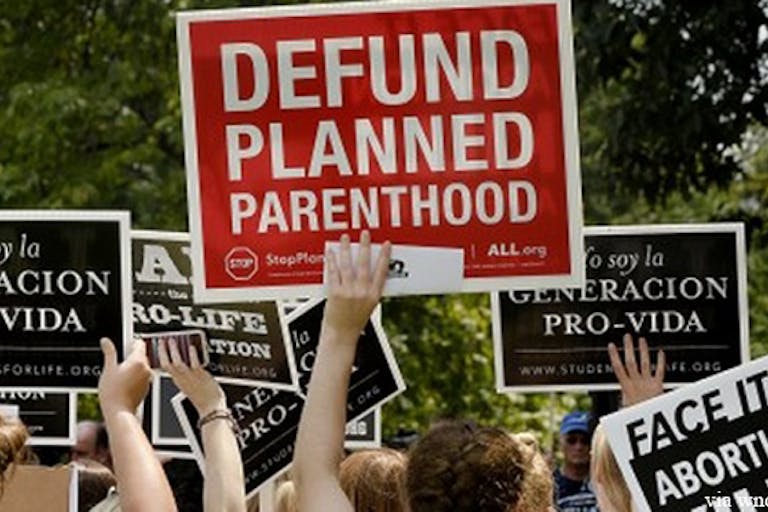
Now is the time: Tell HHS why Planned Parenthood doesn’t deserve Title X funding
The Department of Health and Human Services (HHS) is seeking the public’s comments on newly published proposed rules guiding the Title X federal “family planning” (population control) program. As Live Action News has previously documented, under the new rules, Title X projects will not be allowed to refer women for abortions. Any organization that receives family planning funds will also be required to keep facilities where abortions are committed separate from facilities where family planning care is provided. Planned Parenthood is the largest provider of abortions, and although its supporters will claim tax dollars cannot pay for abortions, Live Action and Live Action News have previously demonstrated how deceptive that claim is:

Title X was enacted in 1970, and as Live Action News has previously documented, one of the chief co-sponsors of the Title X statute allocating millions of federal tax dollars to Planned Parenthood was Rep. George H.W. Bush (R-Texas), who later became our nation’s 41st president. In 1970, the United States House of Representatives voted 298 to 32 to approve the Family Planning Services and Population Research Act, Title X of the Public Health Service Act, authorizing federal dollars to pay for “family planning” services to low-income women.

Live Action News has published additional information indicating that the push for federal population control dollars by Congressman Bush was actually initiated by Planned Parenthood and its “special affiliate,” the Guttmacher Institute, and enacted under the Richard Nixon Administration. (Read about that here).
Bush’s grandfather, Prescott Bush, had been a board member of Planned Parenthood and, at that time, prior to Planned Parenthood committing abortions, approved of the organization’s goals.
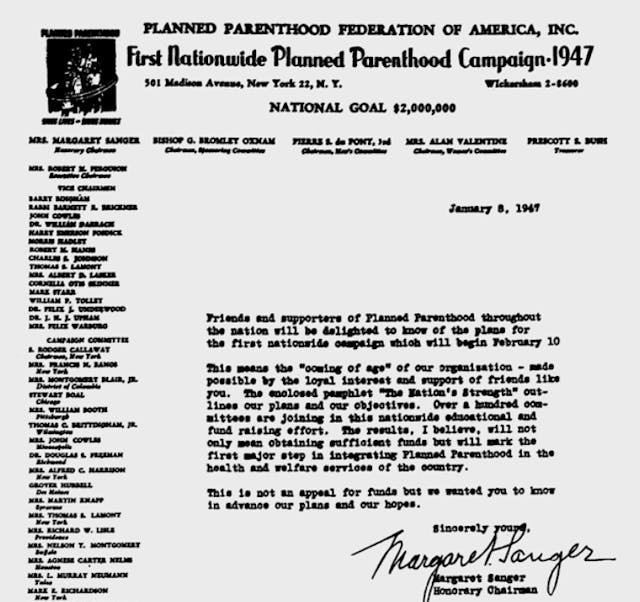
Today, Planned Parenthood, known for violating requirements to report sexual abuse, is one of the largest recipients of those tax dollars, securing about $60 million a year from taxpayers. In 2015, 474 of Planned Parenthood’s nearly 650 facilities were Title X recipients, according to a Guttmacher Institute report.
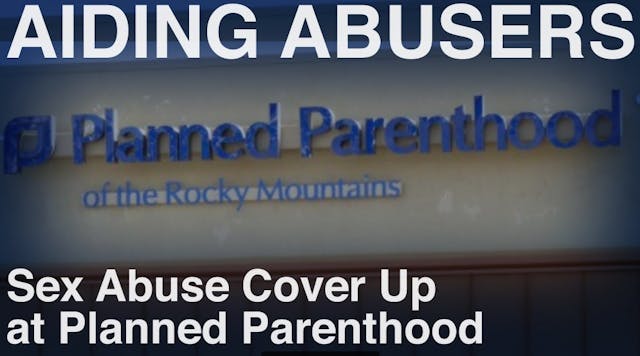
Title X is administered through the Office of Population Affairs (OPA) in the Department of Health and Human Services (HHS). The federal program consists of “grantees,” or a “direct recipient” of Title X funds, which is an “entity that receives Federal financial assistance via a grant and assumes legal and financial responsibility and accountability for the awarded funds and for the performance of the activities approved for funding.”
Funding can also go to “sub-recipients,” which, according to current requirements, are “[t]hose entities that provide family planning services with Title X funds under a written agreement with a grantee. May also be referred to as delegates or contract agencies.”
The facilities where grantee or sub-recipient locate are called “service sites.”
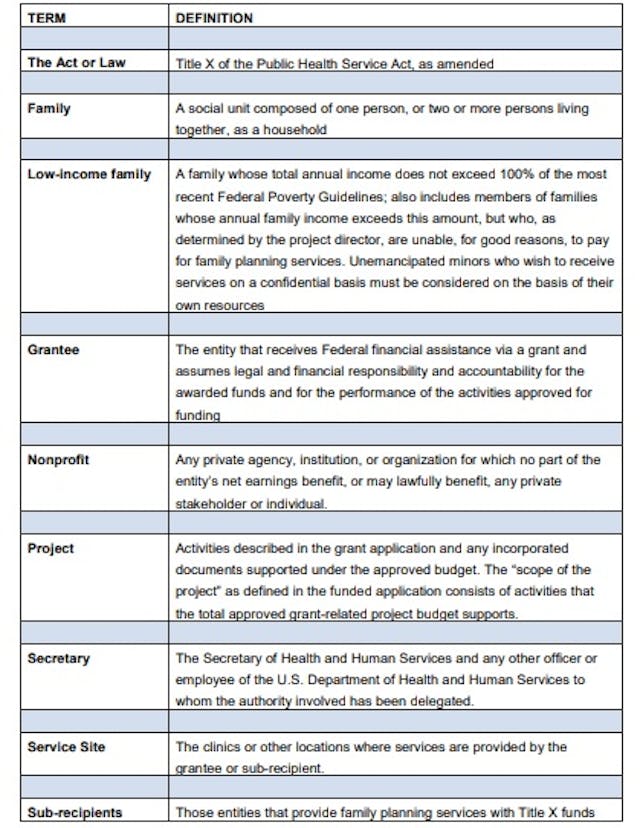
There are ten administrative regions which oversee Title X-funded family planning grantees, subrecipients, and clinics. Currently, “Any public or private nonprofit entity located in a State (which includes one of the 50 United States, District of Columbia, Commonwealth of Puerto Rico, U.S. Virgin Islands, Commonwealth of the Northern Mariana Islands, American Samoa, Guam, Republic of Palau, Federated States of Micronesia, and the Republic of the Marshall Islands) is eligible to apply for a [Title X] grant…”
This includes “[f]aith-based organizations and American Indian/Alaska Native/Native American (AI/AN/NA) organizations….”
The April 2018 Title X Family Planning Directory lists the current agencies receiving funding as either a grantee/recipient, sub-recipient or service site. All updated HHS Title X directories are uploaded here.
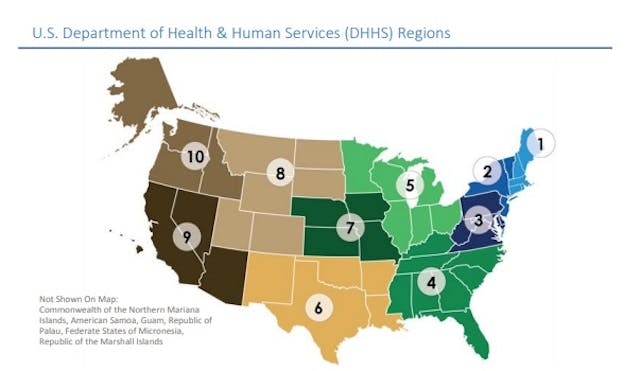
The public is encouraged to comment on the proposed rule changes. According to HHS, “The Department seeks public comment as to whether additional regulatory application review criteria may be necessary or advisable to implement the Department’s interpretation of the statutory provisions applicable to Title X, in particular section 1008….”
According to The Hill:
Section 1008 of the Act, passed by a Democrat-controlled Congress, ensures that no taxpayer dollars be “used in programs where abortion is a method of family planning.” It was not until 1988 that the Reagan administration issued “co-location” guidelines. These guidelines were intended to further protect taxpayers from being complicit with the destruction of abortion. They were challenged in court and the Supreme Court ruled in 1991 that the regulations are permissible. However, a few years later President Bill Clinton, a supporter of abortion, removed those same protections.

In its proposed rules, HHS is seeking comments on a variety of changes, including the following:
To protect the rights of individuals and entities who decline to participate in abortion-related activities.
Ensure that all services funded through Title X offer optimal health benefits to clients of all ages.
Whether protections and services funded through Title X are adequately implemented and clearly understood throughout the Title X program. (Example: The requirement that recipients report abuse.)
Whether a referral agency should be subject to the same reporting requirements as a grantee or subrecipient—by means of requiring grantees and subrecipients to use referral agencies only if they require the referral agencies to submit the required information.
Whether additional regulatory provisions, such as a requirement for a Title X clinic to operate under a distinct name from a facility that provides abortion as a method of family planning, or for organizational separation…
Whether additional policies or requirements, beyond those proposed, should be imposed to ensure compliance. These include expanding the requirement that referral agencies that do not receive Title X funds but nevertheless provide information, counseling, or services to Title X clients be subject to the same reporting and compliance requirements as do grantees and subrecipients; and requiring organizational separation in addition to physical and financial separation.
The proposed rule changes have been published in the Federal Register as well as Regulations.gov. Public comments will remain open until July 31, 2018.
Live Action News is pro-life news and commentary from a pro-life perspective.
Contact editor@liveaction.org for questions, corrections, or if you are seeking permission to reprint any Live Action News content.
Guest Articles: To submit a guest article to Live Action News, email editor@liveaction.org with an attached Word document of 800-1000 words. Please also attach any photos relevant to your submission if applicable. If your submission is accepted for publication, you will be notified within three weeks. Guest articles are not compensated (see our Open License Agreement). Thank you for your interest in Live Action News!

Nancy Flanders
·
Issues
Nancy Flanders
·
Issues
Bridget Sielicki
·
Issues
Angeline Tan
·
Issues
Nancy Flanders
·
Issues
Wesley J. Smith
·
Abortion Pill
Carole Novielli
·
Abortion Pill
Carole Novielli
·
Investigative
Carole Novielli
·
Abortion Pill
Carole Novielli
·
Investigative
Carole Novielli
·